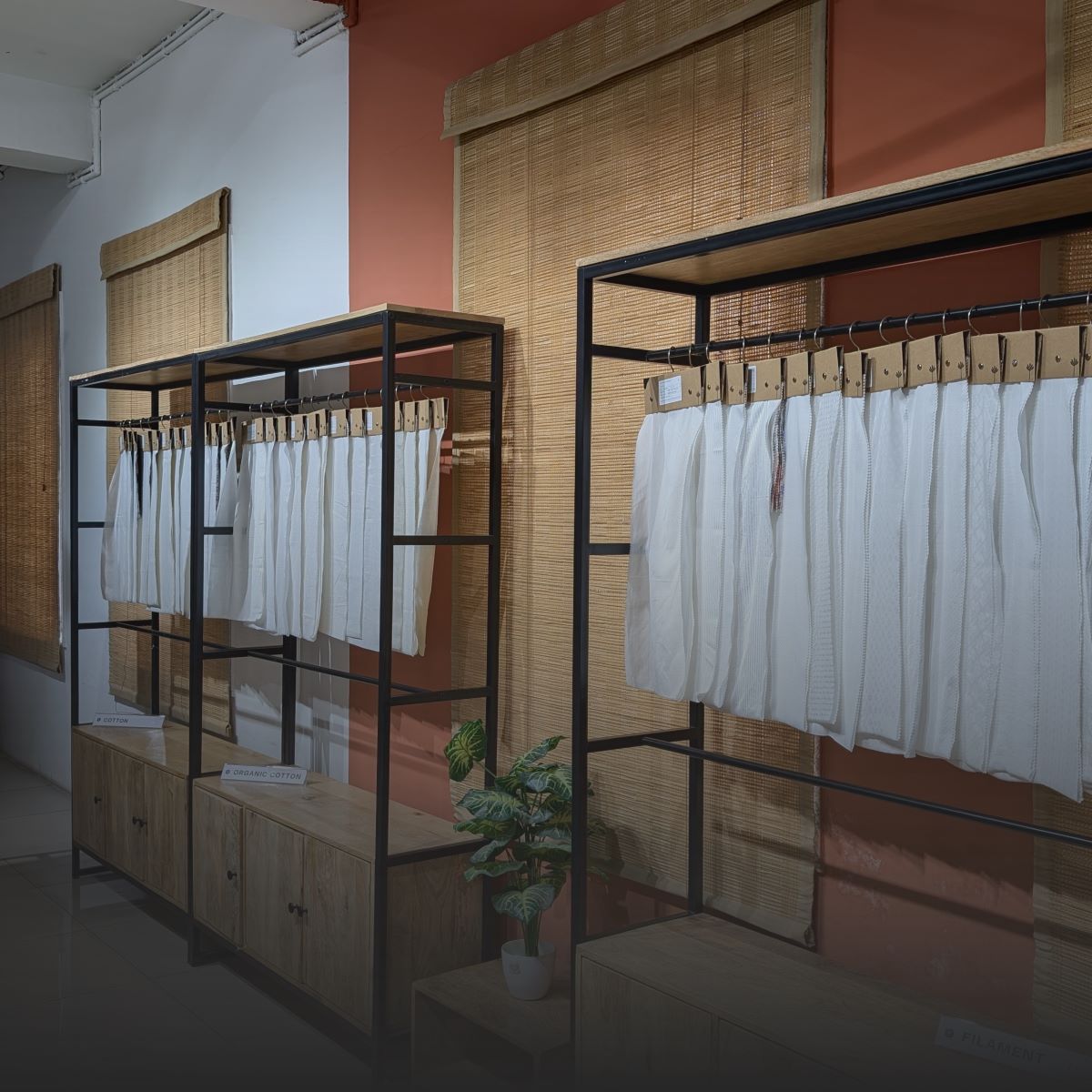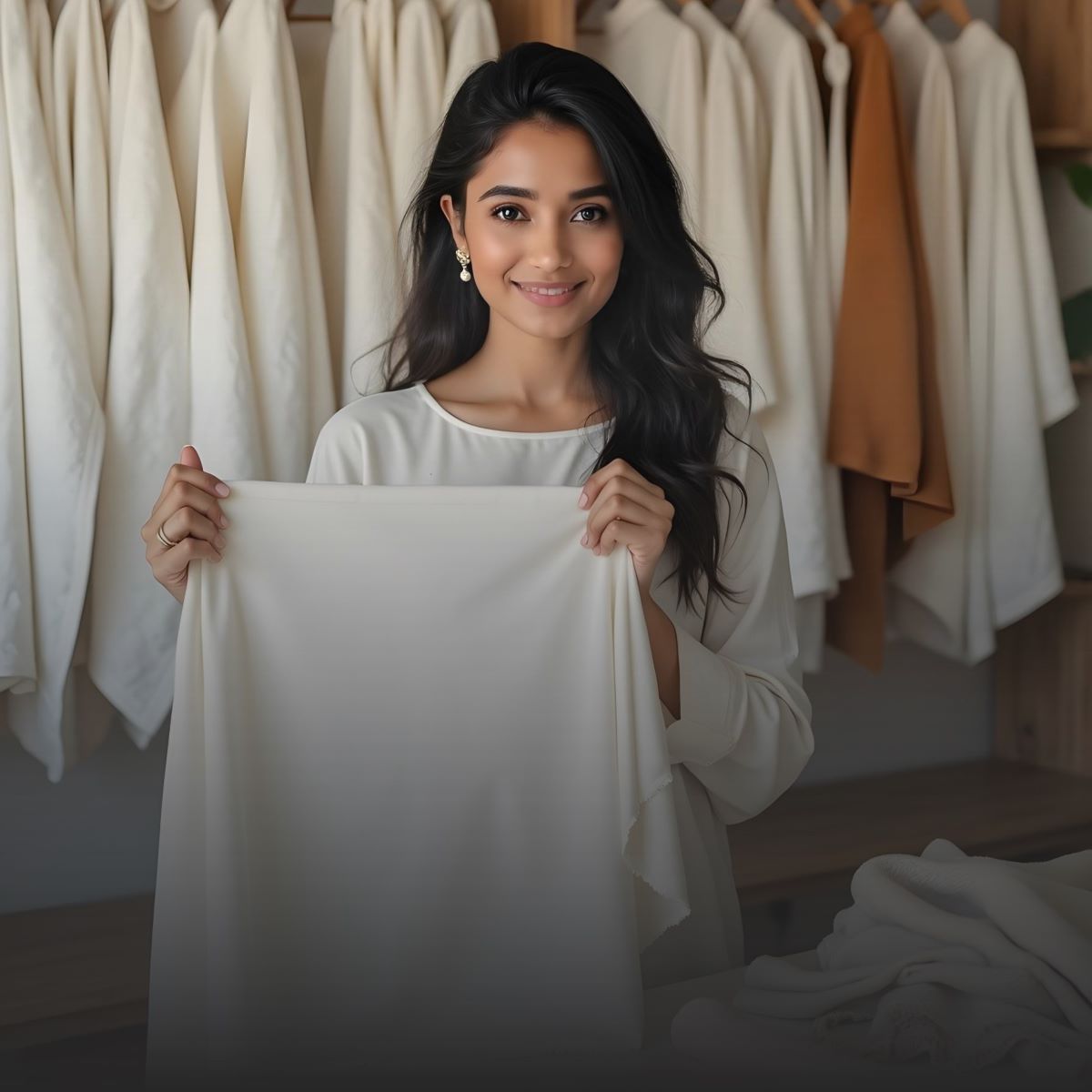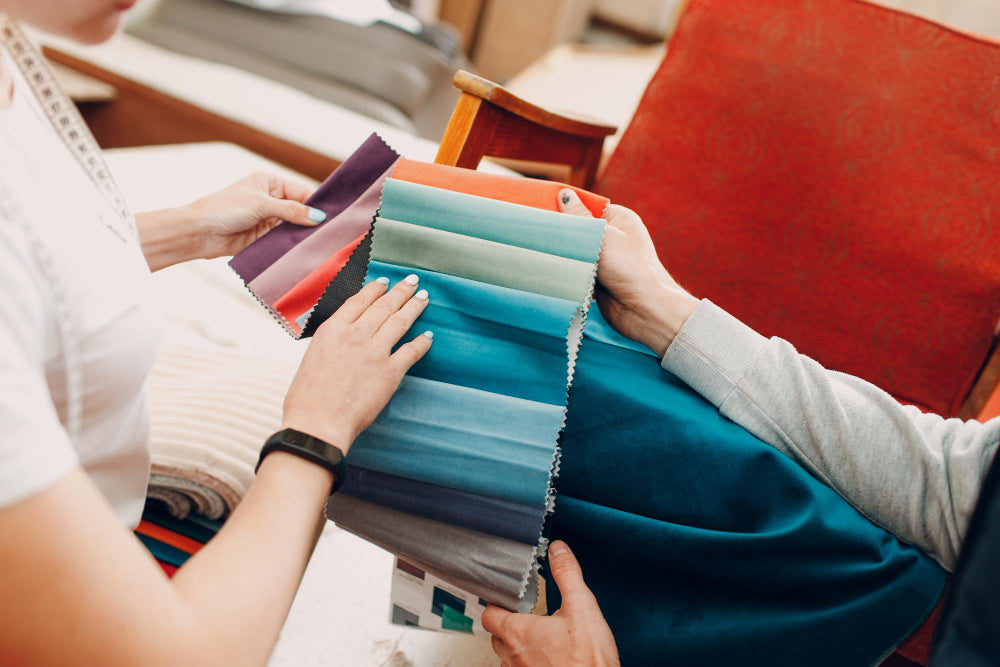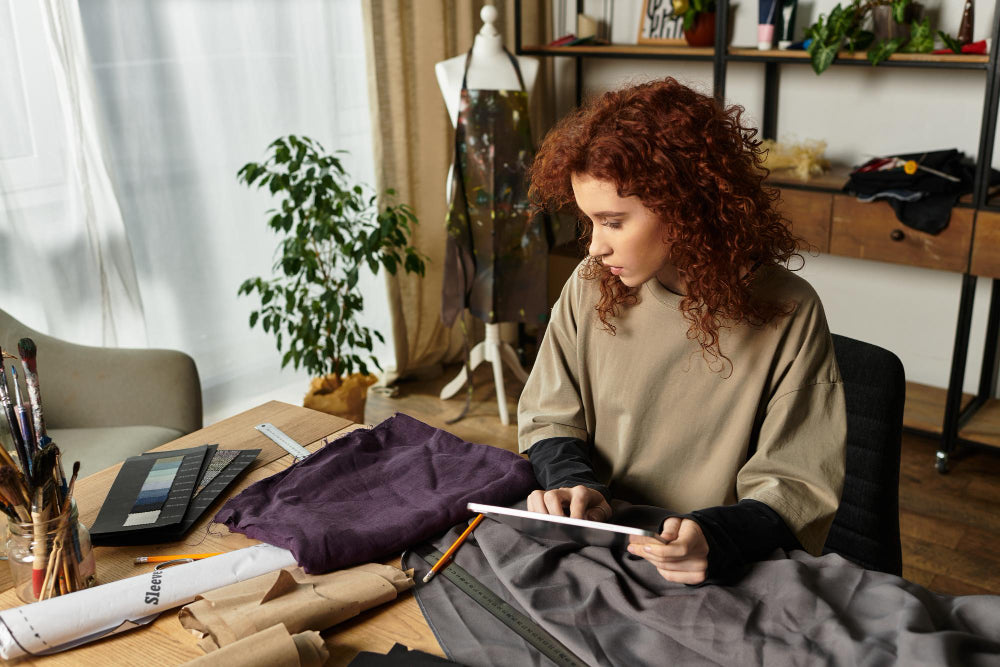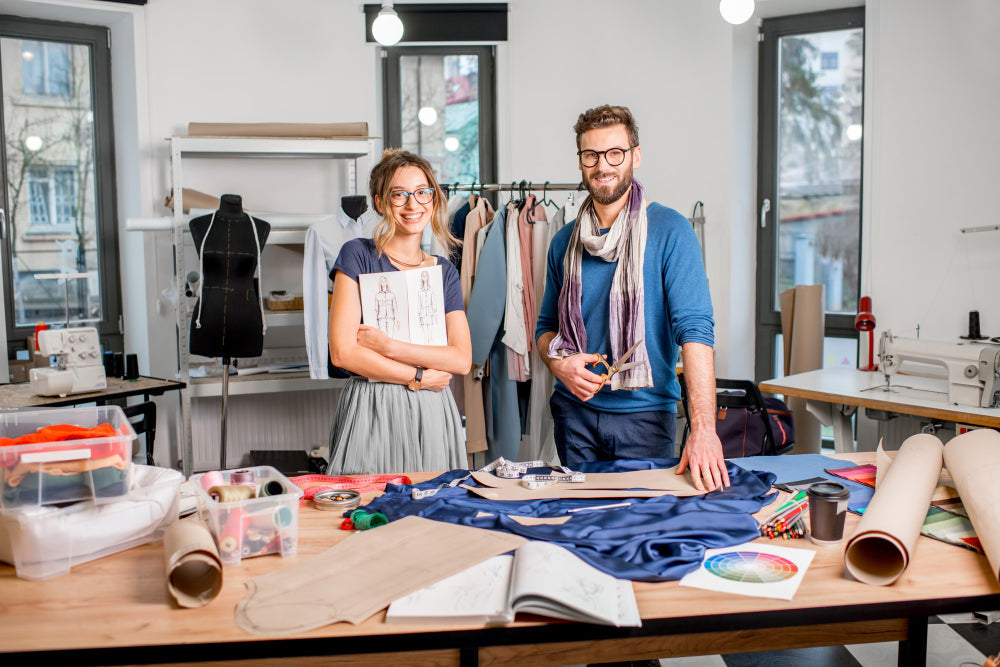Introduction
Eastern Europe is becoming a popular destination for fashion innovation as it combines old-school textile skills and new digital tools. Custom fabric design and sampling services aren't just nice for brands and designers who want to produce more collections or launch new ones; they're a must. As the need for low MOQ fabric printing and eco-friendly sourcing grows, the region is establishing itself as a flexible and affordable place to produce high-quality fabrics. Let's find out how to get customized fabric design and sample services in Eastern Europe.
Understanding Custom Fabric Design & Sampling

What is Custom Fabric Design?
Custom fabric design is the process of making unique prints, patterns, or textures based on a creator's ideas. Customization helps brands stand out in crowded markets, whether it's through branding elements, unique colorways, or seasonal patterns.
Why Sampling Matters
Before committing to large production, designers can test samples to see how well the print works, how long it lasts, how well it matches textures, and how it drapes. This is very important when working with new fabric suppliers or trying materials that haven't been used before.
Typical Moqs In Eastern Europe
Traditional vendors would order hundreds of meters for each design. Still, many fabric suppliers, such as Fabriclore, offer low MOQ fabric printing in Eastern Europe, which often begins with 2-10 meters. This makes it ideal for emerging designers, microbrands, and limited manufacturing runs.
How To Access Fabric Design & Sampling Services In Eastern Europe

Finding the proper textile partner for custom fabric printing services and low MOQ fabric sampling can be game-changing for fashion designers and apparel companies. In recent years, Eastern European fashion production, small batch flexibility, high-quality craftsmanship, and sustainable solutions for brands of all sizes have flourished. This tutorial describes acquiring custom fabric design and sampling services in Eastern Europe for your debut collection or expansion into new markets.
1. Define Your Fabric Needs Clearly

Make sure you know exactly what you need before you contact any suppliers. Clear conversation makes working together easier and reduces mistakes that cost money. First, answer these critical questions:
- Find out what kind of fabric you want. Such as cotton fabric, linen, silk, bamboo, or blends.
- Something like custom fabric printing, solid dyes, or textured weaves would be great.
- How many samples do you need to start? Do you have 50 meters or 2 meters?
- What is your timeline for production?
Being clear about what you want will help possible vendors figure out if they can help you and suggest the best techniques or fabric bases.
2. Find the Right Platform or Studio

Once you know what you want, you need to find a seller that provides custom fabric printing in Eastern Europe with sampling services and low MOQ amounts. It's best to find friends who can also:
- Design consultation and help to get files ready.
- Materials that are sustainable have labels like GOTS or OEKO-TEX.
- Quick shipping and customer service are available in your area.
Top Platforms for Custom Fabric Printing in Eastern Europe:
You can get custom cloth printing from several trustworthy sites in Eastern Europe. Muzefab in Latvia is a big company focusing on being environmentally friendly and selling its goods worldwide. Fabriclore focuses on printing on demand and has cheap minimum order quantities. With a Made in France microfactory, Printcubator can print digitally on textiles all over Europe. Let's go over these in more depth;
i. Fabriclore
Fabriclore is a reliable business-to-business (B2B) partner for custom fabric printing in Eastern Europe. They provide a full range of design, prototyping, and sample services for new and old fashion brands. Low MOQ fabric printing in Europe starts at just 2 meters, making it perfect for trying trends, making quick products, and on-demand fabric printing.
Offering:
- Help with designing and prototyping custom fabrics all over Russia and Europe, with quick response times for samples.
- Digital and handloom materials can be used for fashion, home decor, and eco-friendly product lines.
- Low minimum order quantities for on-demand fabric printing are significant for small collections or tests before the launch.
- Easy shipping and design help worldwide, with personal help from setting up files to samples.
- Perfect for making custom textiles in Europe, with production choices that can be scaled up for growth.
ii. MUZE (Baltic States)
This Riga, Latvia-based business ships many goods worldwide and is committed to using environmentally friendly methods. They do custom and bulk printing on fabric, and they handle all steps of production in-house to get things done faster. One big company that does digital textile printing makes:
- Long-lasting painting with pigments.
- MOQ starts at 1 metre.
- Fashion, sportswear, home decor, and children's clothes can be turned around quickly.
iii. Printcubator (France – servicing Eastern Europe)
This company prints high-quality custom fabrics in France, has shipping choices for Europe, and has a micro-factory model. A service called on-demand textile micro factory:
- MOQ from 2 to 200 meters.
Wide range of sustainable base fabrics.
- Local factory visits and fast sampling support.
iv. Lebenskleidung (Germany/Greece)
Lebenskleidung sells fabrics that GOTS and Fair for Life approve, and they can print your designs on them starting at 10 meters per design. Printing was done in Greece so that Eastern European makers could get textiles made in a way that was good for the environment and the people.
- Custom digital printing from 10 meters per design
- Sampling is available at preferential pricing.
- Printing is handled in Greece and accessible from Eastern Europe.
v. Seride (Italy, servicing Eastern Europe)
Seride offers high-quality custom cloth printing by combining old-fashioned screen printing with new digital methods. They serve Eastern Europe and have a lot of clothing choices. They also have an in-house lab for color and quality control.
- Vast fabric base (cotton, silk, synthetics).
- In-house lab testing for quality and color accuracy.
- Sampling support with customized design adaptation.
Regional Clothing Manufacturers Offering Sampling
Clothing makers in Eastern Europe offer quick and efficient sampling and production services emphasizing quality and environmental friendliness. FUSH is a major player in Serbia, and there are other well-known makers in Russia, Poland, Hungary, and the Czech Republic.
FUSH (Serbia)
A fully integrated clothing manufacturer known for:
- End-to-end services from sketch to finished piece.
- Sampling timelines from 2–4 weeks.
- Emphasis on ethical labor and sustainable fabrics.
Other Notable Manufacturers
- Russia: CreaTex – offering private label and printing support
- Poland: LPP's Design Hub in Gdańsk – prototyping and sampling
- Hungary & Czech Republic: Smaller ateliers offering high craftsmanship and flexible MOQs.
Local Print Studios And Textile Hubs
Designers who work with nearby textile labs and print studios have direct access to technicians, workshops, and comments in real-time. Important hubs are:
- Warsaw: Textilimpex Lab – open studio model.
- Budapest: Printa – eco-printing with in-person workshops.
- Prague: Textile Mountain – circular design hub.
- Bucharest: Bounty Print – hybrid digital studio for fashion startups.
3. Request Fabric Swatches or Print Tests

It is important to see and feel the fabric before you agree to a full sample run.
First, place an order:
- You want to use samples of the base fabrics to check their feel, weight, and shape.
- Strike-offs are small test prints of your design that you can use to check the color accuracy, sharpness of the details, and bleed.
This step is essential when working with natural fibers because they absorb dye differently.
Fabriclore Makes This Even Easier With Their Experience Studio
You can easily order swatches here and check out live videos that provide a detailed look at each fabric, including its feel, fall, luster, wrinkle resistance, sheerness, stretch, and more.
The knowledgeable team at Fabriclore shares insights on how various prints and colors interact with different fabric bases and how the materials are expected to perform during production.
With the support of Fabriclore's skilled team, you receive tailored guidance and trustworthy insights.
For expert help, contact Fabriclore at +91 8800554542, mail at hello@fabriclore.com, or visit www.fabriclore.com—their team is always ready to support your fabric sourcing journey.
4. Consult The Experts

Technical support and design consultations are something that most trustworthy platforms offer. If you're new to textile creation or digital fabric printing, don't be afraid to ask for help. Some services could be:
- Getting your image to the right repeat size.
- (TIFF, AI, PSD, etc.) advising on print file formats.
- Choosing print methods (like reactive, pigment, and sublimation) based on the fabric and how it will be used.
- If needed, suggest products that are eco-friendly or certified.
This step, which involves working together, ensures that your design looks good on both the screen and the fabric.
5. Place Your Sample Order

Now that you've chosen the fabric and accepted the files, it's time to order your custom samples. What to look forward to:
- Digital prints: 7–14 business days lead time.
- Traditional methods: 2–4 weeks, depending on complexity, color depth, and finishing.
- Shipping: Most vendors offer express international delivery options.
Before you finalize the order, check the cloth width, GSM, and finish details.
6. Review Samples Before Approving Production

When your trial order comes, you should look at it in several different ways:
- Print Quality: Check for sharpness, resolution, and bleed.
- Color Accuracy: View under different lighting (natural, fluorescent, warm).
- Fabric Feel: Ensure drape, stretch, and surface match your expectations.
- Durability: Perform a wash test to check for shrinkage or fading.
You shouldn't start mass production until you're pleased with the sample. A second practice round might be needed if any changes need to be made.
7. Move to Bulk Production

Once the example is okay, you can start making many of them. Most Eastern European bulk fabric vendors have choices that can be scaled up or down from 10 to 500+ meters and more.
Key advantages include:
- Print consistency between samples and final run.
- Reliable turnaround times.
- Shipping across the EU, UK, and North America
Some sites may even have inventory warehousing or dropshipping services.
8. Sustainability And Certifications

When using custom fabric sampling services, it's essential to make sure they have the following certifications:
- GOTS (Global Organic Textile Standard)
- OEKO-TEX Standard 100
- Fair for Life
- These show safe production methods that are good for the environment.
9. Tips For A Smooth Experience

Getting ready can make all the difference to custom fabric printing in Eastern Europe. For small batch fabric printing to work, there needs to be clear communication and testing from the planning phase to the delivery phase.
Pro Tips to Optimize Your Experience:
- For accurate digital fabric printing, send a complete brief that includes Pantone codes, the type of fabric, and models.
- Always buy swatches and strike-offs to ensure the quality of the print on fabric, the accuracy of the colors, and how the fabric will behave.
- To avoid delays, ensure you know how long it will take for both fabric sampling services and final production.
- Check the reprint rules and quality controls to ensure the output is safe and consistent.
- For long-term projects in custom textile manufacturing Europe, visit partner studios or plants as often as possible.
Global Fabric Wholesale Made Easy With Fabriclore At Low Moq

Fabriclore makes it easier for designers, boutique businesses, and private labels to discover and test unique materials. To assist fashion enterprises around the world, Fabriclore has expanded its network of fabric wholesale suppliers and currently offers services in:
Europe
Balkans & Central Asia
Caribbean & LATAM
Africa
Fabriclore provides cheap MOQ, fast delivery, and skilled sampling for sustainable fabric printing in Eastern Europe and designer custom fabrics.
Final Thoughts

Finding fabrics can feel like a lot, but Eastern Europe provides designers with a great mix of affordability, craftsmanship, and sustainability—particularly for custom fabric sampling and small-batch production.
If you're trying out bold new prints or perfecting your signature fabric, this step-by-step process will help you succeed:
- Define your needs
- Choose the right partners.
- Sample smart
- Scale sustainably
Looking for some guidance to begin? Fabriclore provides comprehensive assistance for custom fabric printing in Eastern Europe, featuring low minimum order quantities, certified fabrics, and expert design support.
FAQ’s
Q.1 Which Country Is Best For Printing Technology?
Ans: While many countries offer fabric printing services, Fabriclore offers the best on-demand custom fabric printing with top-quality and authentic materials. Instead of limiting itself to one country, Fabriclore leverages a network of trusted partners across Eastern Europe to deliver precision printing combined with sustainable fabrics and low minimum order quantities. This makes it easier for designers to access world-class printing technology tailored to their needs.
Offers a range of printing methods matched to different fabric types:
- Digital Printing: cotton, silk, linen.
- Sublimation Printing: polyester, synthetic blends.
- Pigment Printing: organic cotton, canvas.
- Reactive Printing: viscose, rayon.
- Eco-Friendly Options: GOTS-certified, OEKO-TEX fabrics.
By combining these techniques with expert design support and quick sampling, Fabriclore ensures you get high-quality prints exactly how you envision them—without compromise.
Q.2 Which Printing Is Best For Fabric?
Ans: The best printing method depends on fabric type, design complexity, and budget. Digital Printing offers vibrant colors and fine details, ideal for small runs. Screen printing is durable and cost-effective for bulk orders. Reactive dye printing works well on natural fibers, providing deep, lasting colors.
- Digital: vibrant colors
- Screen: bulk durability
- Reactive dye: natural fibers
- Sublimation: polyester fabrics
Q.3 What Is The Newest Method Of Fabric Printing?
Ans: Direct-to-garment (DTG) and digital textile printing are among the latest innovations in fabric printing. These methods allow on-demand production with minimal waste, fine detail, and fast turnaround times, making them ideal for small batches and customized fashion.
- DTG: on-demand Printing
- Digital textile: detailed prints
- Eco-friendly: low-waste
- Fast turnaround times
Q. 4 What Is The Most Cost-Effective Form Of Printing Fabrics?
Ans: Screen printing remains one of the most cost-effective fabric printing methods, especially for large runs. It offers consistent colors and durability at lower per-unit costs. For smaller orders, digital Printing reduces setup fees but may cost more per piece.
- Screen printing: large runs
- Digital Printing: small runs
- Low setup cost (screen)
- Per piece cost (digital)
Q.5 What Is The Highest-Quality Printing Method?
Ans: Reactive dye printing is considered top quality for natural fibers due to its vibrant colors and excellent wash fastness. Digital printing also produces high-quality, detailed designs on various fabrics with less environmental impact than traditional methods.
- Reactive dye: vibrant colors.
- Excellent wash fastness.
- Digital: detailed designs.
- Eco-friendly options.
Q.5 What Is The RFD Process In Textiles?
Ans: RFD stands for Ready For Dyeing, a textile process where fabrics are pre-treated to be clean and free of oils, waxes, or other impurities. This ensures better dye absorption and consistent color results during Printing or dyeing.
- RFD: pre-treated fabrics.
- Removes impurities.
- Ensures color consistency.
- Improves dye absorption.
Your Go-To Wholesale Fabric Supplier in Europe – Start Creating Today!
We also happen to be a magnet for suggestions, and would love to catch yours….throw us yours on hello@fabriclore.com
